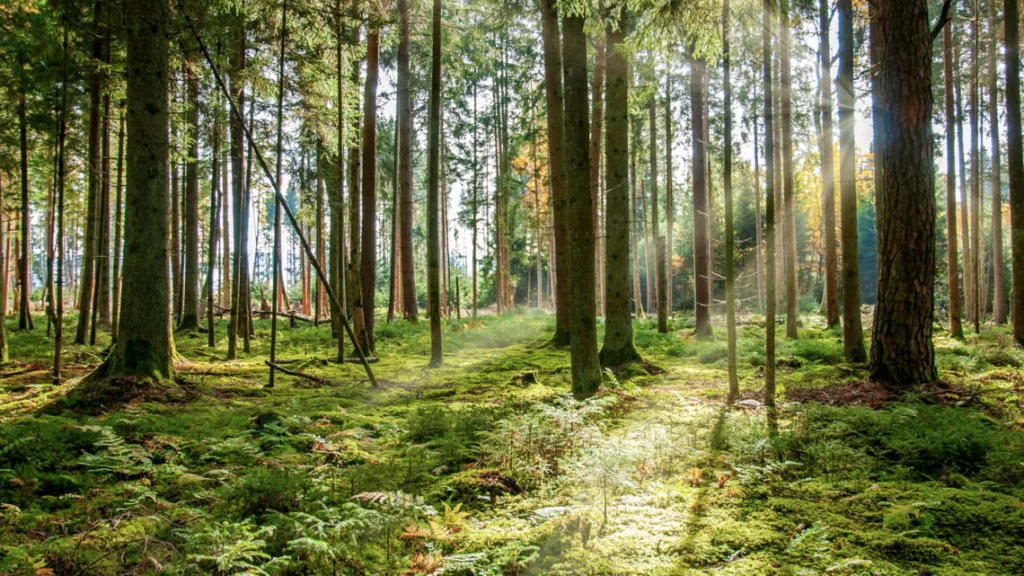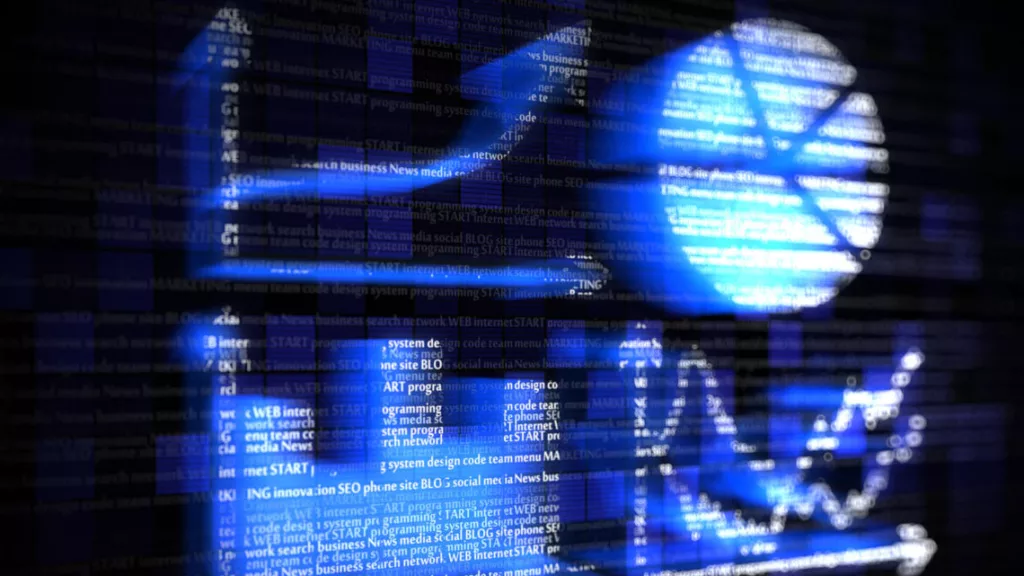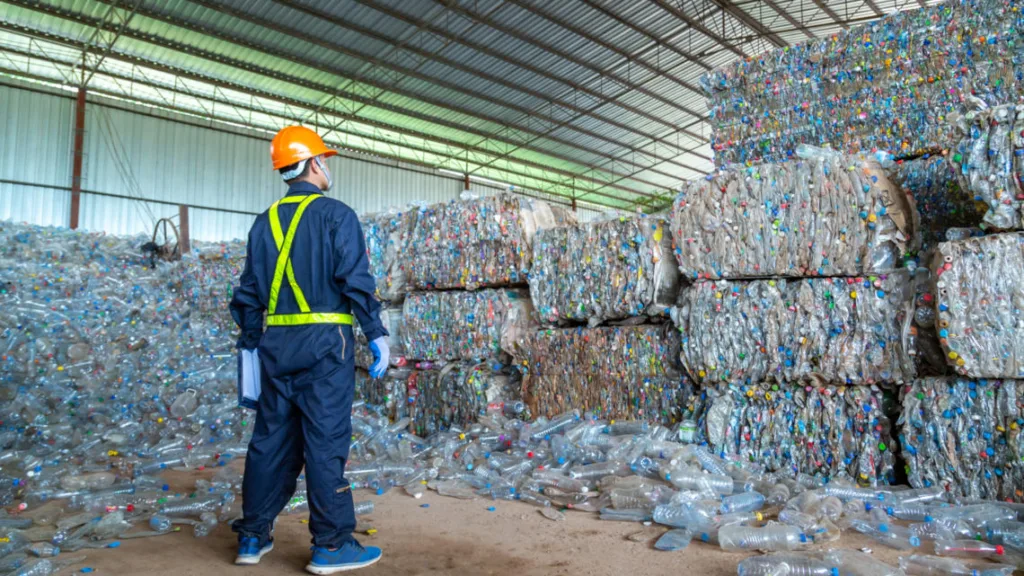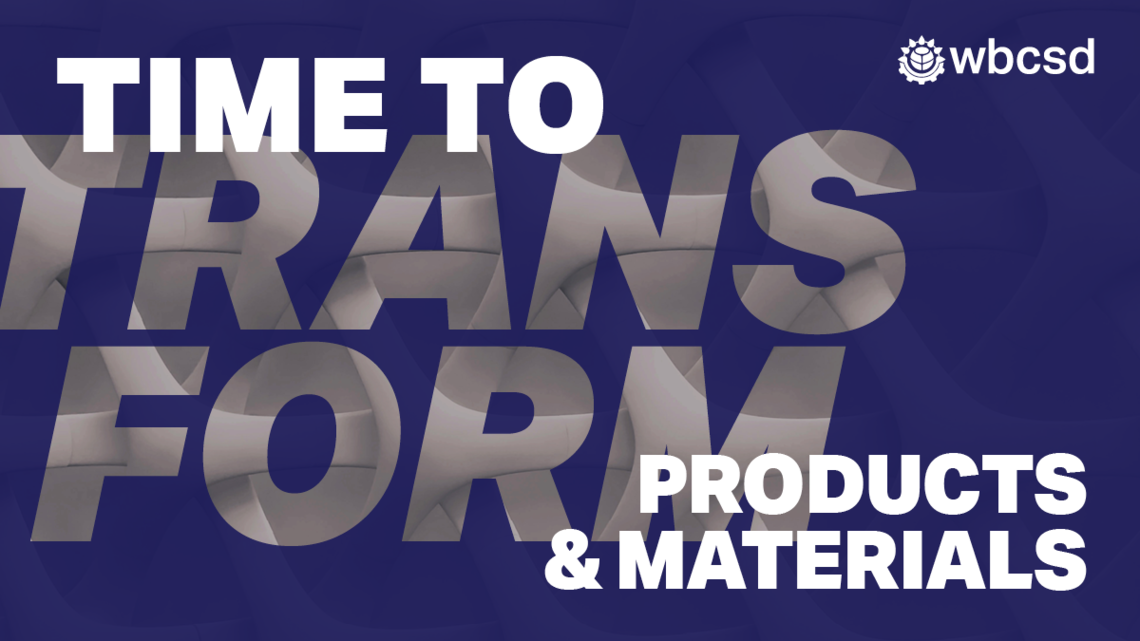Authors
Federico Merlo
By Federico Merlo, Managing Director Member Relations at the World Business Council for Sustainable Development (WBCSD)
The circular economy provides a “back-to-basics” perspective that reminds us to use resources of all forms – such as energy, water, materials, food – as they are: finite and valuable. A complete life cycle approach that accounts for environmental and social impacts can help to deliver the cohesive systems transformations required to address the climate emergency, nature loss and mounting inequality.
Vision 2050: Time to Transform is WBCSD’s framework for business action in line with the urgency of the challenges that we face as global societies. Developed with 40 of our members, it offers companies comprehensive and ambitious guidance on how they can lead the transformations needed to bring about a world in which 9+ billion people can live well, within planetary boundaries, by 2050. The Products & Materials pathway is one of nine transformational pathways at the heart of “Vision 2050: Time to Transform”. The pathway is about “things” – the goods people use to fulfil their needs and aspirations, and the assets and materials businesses need to operate and grow. The pathway applies to anything from soap to spaceships, forests to freight trains, covering the raw materials that are extracted and processed, the products that are manufactured, distributed and sold, and processed and recovered at end-of-life.
WBCSD’s vision for Products & Materials is that by 2050 resource use is optimized to meet society’s needs while allowing the systems that provide resources to regenerate. For circular products and materials to translate into climate, nature and societal benefits, there are a series of key transitions required: circular business models become the norm, creating economic, environmental and social opportunities; a circular bioeconomy plays an increasingly central role in global economic activity; goods and services meet the needs of communities around the world, while leaving no one behind; material collection and recovery improves exponentially; the flow of waste into the environment is ended and nature restored; people embrace circular, regenerative and socially responsible consumption; and technology advances are deployed responsibly and drive improved efficiency and transparency across the value chain.
WBCSD and our members are already working towards these transitions through ongoing initiatives including Factor10, Circular Plastics & Packaging and the Circular Electronics Partnership; these collectively engage more than half of WBCSD’s membership. Furthermore, WBCSD sector projects such as the Chemicals Group, Forest Solutions Group and Tire Industry Project provide comprehensive sector insights that ground the Products and Materials pathway. Supported by these projects and their outputs (e.g. Circular Transition Indicators), our members are already addressing many action areas highlighted in Vision 2050. The pathway proposes 10 prioritized action areas for business to focus on over the course of the next decade, to accelerate the pace and scale of change needed for sustainable products and materials. The effect of these actions can be amplified through key enablers of innovation, common policy, financial levers, and individual consumption behaviors. Here are the action areas with those we are already working on with members highlighted in bold:
- Develop new business models to ensure product life cycles are extended for as long as possible, prioritizing maintenance and refurbishment where appropriate.
- Integrate circularity and next-life use into all aspects of business strategy from product design to go-to-market, after-sales service and end-of-life collection. Map and identify value chain gaps in capabilities related to closing circular loops, and work to address them internally and together with partners.
- Account for the true value of products and materials by factoring in natural, social and human capital costs. Update accounting principles to encourage longer life.
- Invest in the innovation and adoption of sustainable and circular biological products that store carbon and substitute non- renewable and fossil-based materials, while also setting ambitious, science-informed goals that contribute to nature recovery.
- Establish consensus on and uptake of a common set of definitions and metrics to enhance decision-making, collaboration and disclosure of circular performance and linear risk.
- Employ a people-centric approach to innovation, investing in the continual upskilling, reskilling and empowerment of workers in the face of emerging business models and new technologies.
- Engage in positive advocacy with policymakers to create a playing field that ultimately favors secondary materials.
- Develop and improve internal policies and systems for human rights due diligence as set out by the UN Guiding Principles on Business and Human Rights and ensure human rights are respected across all global value chains.
- Drive collaborative efforts that cut across value chains to invest in improved local capacity and infrastructure for the collection and processing of materials necessary to support circular business models, particularly in developing countries.
- Collaborate on campaigns to drive global consumer behavior change, targeting enhanced acceptance and preference for durability and serviceability as well as refurbished and recycled products while also making recycling as easy and convenient as possible.
Moving forward, WBCSD’s Products and Materials work will build upon existing initiatives to provide a platform for the world’s biggest and boldest companies to drive circular solutions that align global resource consumption with the climate, nature and societal challenges that we face. We founded Factor10 in 2018 in support of the notion that we need to improve resource efficiency by a factor of 10. With global circularity at 8.6% today, we need systemic change more than ever to produce and consume products and materials if we are to support the transformations required for 9+ billion people to live well, within planetary boundaries.
Doing so will require unprecedented and unconventional collaboration. It will be uncomfortable and unnerving. However, there’s confidence in knowing a more circular economy is essential to achieve a our vision of a world in which 9+ billion people can live well, within planetary boundaries, by 2050. We invite you to join us in transforming how we make and use products and materials to respond to our today’s greatest environmental and social imperatives.
VISION 2050 INSIGHT SERIES
This article is part of an ongoing insight series into WBCSD’s Vision 2050: Time to Transform.
Introduction: Julian Hill-Landolt, Director, Vision 2050, introduces the Vision 2050: Time to Transform insight series and provides an overview of the topics that will be covered.
Living Well: Filippo Veglio, Managing Director, People & Society, takes a deeper look at what it means to “live well” – a world in which everyone’s dignity and rights are respected, basic needs are met, and equal opportunities are available for all.
Living within Planetary Boundaries: Diane Holdorf, Managing Director of the Food & Nature Program, and Claire O’Neill, Managing Director of the Climate & Energy Program, take a deeper look at what it means to “live within planetary boundaries”.
We can provide healthy diets for all: Diane Holdorf, Managing Director of the Food & Nature Program, explores Vision 2050’s Food pathway.
We can connect people: Constant van Aerschot, Director WBCSD Asia Pacific, talks with Fujitsu’s Mel Melis about Vision 2050’s Connectivity pathway.
We can keep the water flowing: Joe Phelan, Director WBCSD India, provides an overview of our Water & Sanitation pathway and reflects on its importance in India.
We can keep on moving, smarter: Wei Dong Zhou, Director WBCSD China, interviews WBCSD’s Director Mobility Thomas Deloison about Vision 2050’s Transportation & Mobility pathway.
Next Up: Bill Sisson, Executive Director, WBCSD North America, will offer a deeper look into Vision 2050’s Living Spaces pathway.
Related
Content

TNFD releases proposed disclosure metrics for the forest sector
19 September, 2023

CSRD and circular economy: Navigating sustainability reporting with the Circular Transition Indicators
24 July, 2023

Embedding corporate accountability into the global plastics treaty
26 May, 2023
